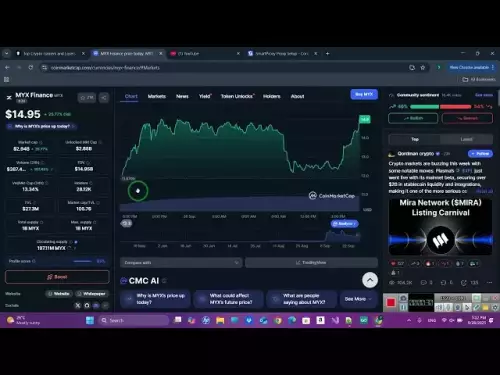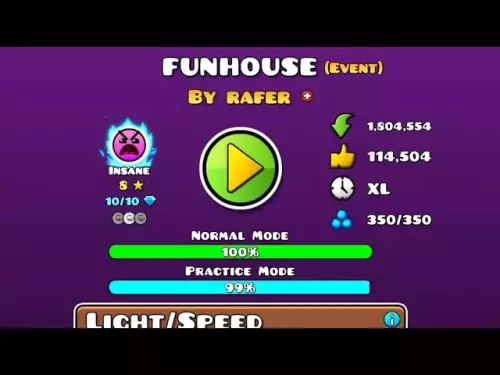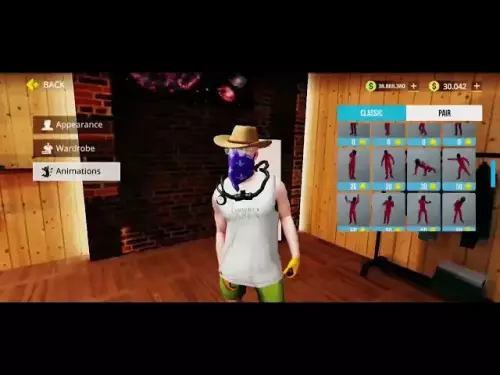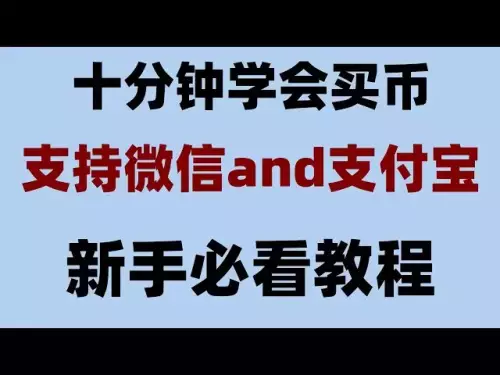-
 bitcoin
bitcoin $109547.008142 USD
0.04% -
 ethereum
ethereum $4011.838726 USD
-0.05% -
 tether
tether $1.000402 USD
-0.01% -
 xrp
xrp $2.798606 USD
0.88% -
 bnb
bnb $970.877944 USD
1.39% -
 solana
solana $202.237275 USD
-0.95% -
 usd-coin
usd-coin $0.999673 USD
0.00% -
 dogecoin
dogecoin $0.229294 USD
-1.15% -
 tron
tron $0.336370 USD
-0.45% -
 cardano
cardano $0.777260 USD
-1.66% -
 hyperliquid
hyperliquid $45.503019 USD
1.73% -
 ethena-usde
ethena-usde $1.000362 USD
0.01% -
 chainlink
chainlink $20.785303 USD
-1.10% -
 avalanche
avalanche $28.755822 USD
-0.11% -
 stellar
stellar $0.358303 USD
-0.48%
How do I use the Binance Futures test network?
The Binance Futures Testnet offers a risk-free environment to practice trading, test strategies, and develop APIs using virtual funds and real-time market data.
Sep 19, 2025 at 04:54 am

Understanding the Binance Futures Test Network
1. The Binance Futures test network, also known as the Binance Testnet, is a simulated trading environment designed to mirror the live futures market. It allows traders and developers to experiment with futures contracts without risking real funds. This platform replicates the functionality of the actual Binance Futures exchange, including order types, leverage settings, margin modes, and market data feeds.
2. Accessing the testnet requires creating an account specifically for this environment. Users must visit the official Binance Testnet website rather than the main Binance domain. Upon registration, virtual funds are automatically allocated to the account, enabling immediate testing of trading strategies, API integrations, or bot performance under realistic conditions.
3. Trading on the testnet operates with synthetic USDT and coin-margined contracts. These assets have no monetary value but behave identically to their real-world counterparts in terms of price movements and contract specifications. This setup ensures that users can evaluate entry and exit points, backtest algorithms, and assess risk management techniques accurately.
4. The interface closely resembles the production version of Binance Futures, allowing seamless transition between environments. Features such as stop-loss orders, take-profit levels, trailing stops, and time-in-force options are fully functional. Market depth, open interest, and funding rates are updated in real-time based on simulated trading activity across the network.
Setting Up Your Testnet Account
1. Navigate to the Binance Testnet portal using a supported web browser. Ensure that JavaScript and cookies are enabled to prevent login issues. Use an email address dedicated to testing purposes to avoid confusion with your primary Binance account.
2. Complete the registration process by providing a valid email and setting a secure password. No identity verification (KYC) is required for the testnet, making account creation fast and straightforward. After confirming the email, log in to access the dashboard.
3. Once logged in, locate the 'Futures' section within the testnet interface. A default balance of 10,000 USDT or equivalent test coins will be available for trading. This balance resets periodically, so long-term strategy evaluation should account for potential fund refreshes.
4. For developers integrating with the Binance API, generate testnet API keys from the account settings page. These keys differ from live environment credentials and are restricted to use within the testnet ecosystem. Assign appropriate permissions such as reading market data, placing orders, or managing positions.
Executing Trades and Testing Strategies
1. Select a futures pair such as BTC/USDT or ETH/USDT to begin trading. Adjust leverage settings according to your intended risk profile—options typically range from 1x to 125x depending on the contract. Switch between cross and isolated margin modes to observe how each affects liquidation prices and position sizing.
2. Place limit, market, stop-limit, or conditional orders to simulate various execution scenarios. Monitor order fills through the trade history panel and verify that slippage, fees, and execution speed align with expectations. Use this data to refine algorithmic parameters or manual decision-making processes.
3. Analyze performance metrics such as PnL, realized gains, and maximum drawdown after running multiple trades. Compare results against historical price action to determine if a strategy would have been profitable under past market conditions.
4. Integrate third-party tools like charting libraries, signal generators, or automated bots using the provided WebSocket and REST APIs. Validate connectivity, message parsing, and response times to ensure reliability before deploying on the live platform.
Common Issues and Troubleshooting
1. Delayed price updates or missing ticks may occur due to server load or internet connectivity. Refresh the page or reconnect WebSocket streams to restore data flow. Check the status page for any ongoing maintenance affecting the testnet infrastructure.
2. API requests returning authentication errors often stem from incorrect key configuration or insufficient permissions. Reissue API keys with the necessary access rights and confirm they are linked to the testnet, not the live exchange.
3. Sudden balance resets are normal behavior on the Binance Testnet. Do not interpret these changes as bugs; instead, design test cases that accommodate periodic fund replenishment or implement scripts to reinitialize positions automatically.
4. Inconsistent order fills compared to the live market may arise from lower liquidity simulation. While major pairs reflect approximate spread and depth, less popular contracts might exhibit exaggerated volatility or delayed executions.
Frequently Asked Questions
Can I transfer funds from the Binance Testnet to my real account?No, all balances on the Binance Futures test network are virtual and cannot be withdrawn or transferred to any real-money account. The purpose of the testnet is strictly for educational and developmental use.
Are the API endpoints for the testnet different from the live environment?Yes, the Binance Testnet uses separate API endpoints. Developers must use the designated testnet URLs for REST and WebSocket connections to ensure proper communication with the simulated system.
How often is the testnet data refreshed?Market data on the Binance Testnet is generated in real-time based on simulated trading activity. However, account balances and positions may reset at regular intervals, which can vary depending on system updates or scheduled maintenance.
Is there customer support for the testnet?Binance does not provide direct customer support for the testnet. Users are encouraged to consult official documentation, developer forums, or community channels for assistance with technical issues or integration queries.
Disclaimer:info@kdj.com
The information provided is not trading advice. kdj.com does not assume any responsibility for any investments made based on the information provided in this article. Cryptocurrencies are highly volatile and it is highly recommended that you invest with caution after thorough research!
If you believe that the content used on this website infringes your copyright, please contact us immediately (info@kdj.com) and we will delete it promptly.
- Ethereum's Price Dance: Will Crypto Rallies Keep the Music Playing?
- 2025-09-29 08:25:12
- Crypto Staking Spotlight: BlockDAG's Referral Revolution Outshines Avalanche & Meme Coin Hype
- 2025-09-29 08:45:16
- BlockDAG, SUI, Chainlink: Navigating the Crypto Landscape in 2025
- 2025-09-29 08:25:12
- XRP Price Gears Up: Breakout Signals and What to Watch
- 2025-09-29 08:30:01
- Bitcoin, Gold, and Digital Assets: Navigating the New Financial Frontier
- 2025-09-29 08:45:16
- UN Embraces Blockchain: A Pension Fund Success Story and a Glimpse into the Future
- 2025-09-29 08:50:01
Related knowledge

How do I use the scheduled order feature in Cardano (ADA) contracts?
Sep 28,2025 at 10:18pm
Understanding Scheduled Orders in Cardano Smart ContractsCardano operates on a proof-of-stakes consensus mechanism and uses the Plutus scripting langu...

How do I enable the "scalping-only" mode for Cardano (ADA) contracts?
Sep 24,2025 at 03:19am
Understanding Scalping Strategies in Crypto Derivatives1. Scalping in cryptocurrency trading refers to executing multiple short-term trades within min...

What is the settlement time for Cardano (ADA) contracts?
Sep 28,2025 at 04:18am
Understanding Cardano's Contract Settlement Mechanism1. Cardano operates on a proof-of-stake consensus model known as Ouroboros, which fundamentally i...

How do I add margin to Cardano (ADA) contracts?
Sep 27,2025 at 07:54pm
Understanding Margin in Cardano (ADA) Smart ContractsCardano operates on a proof-of-stake blockchain that supports smart contracts through its Plutus ...

What is the maximum position limit for Cardano (ADA) contracts?
Sep 23,2025 at 11:00pm
Understanding ADA Futures and Derivatives Market Structure1. Cardano (ADA) futures contracts are offered by several major cryptocurrency derivatives e...

What is the maker fee for Cardano (ADA) contracts?
Sep 26,2025 at 09:01am
Understanding Maker Fees in Cardano (ADA) Contracts1. The concept of maker fees applies broadly across decentralized exchanges and smart contract plat...

How do I use the scheduled order feature in Cardano (ADA) contracts?
Sep 28,2025 at 10:18pm
Understanding Scheduled Orders in Cardano Smart ContractsCardano operates on a proof-of-stakes consensus mechanism and uses the Plutus scripting langu...

How do I enable the "scalping-only" mode for Cardano (ADA) contracts?
Sep 24,2025 at 03:19am
Understanding Scalping Strategies in Crypto Derivatives1. Scalping in cryptocurrency trading refers to executing multiple short-term trades within min...

What is the settlement time for Cardano (ADA) contracts?
Sep 28,2025 at 04:18am
Understanding Cardano's Contract Settlement Mechanism1. Cardano operates on a proof-of-stake consensus model known as Ouroboros, which fundamentally i...

How do I add margin to Cardano (ADA) contracts?
Sep 27,2025 at 07:54pm
Understanding Margin in Cardano (ADA) Smart ContractsCardano operates on a proof-of-stake blockchain that supports smart contracts through its Plutus ...

What is the maximum position limit for Cardano (ADA) contracts?
Sep 23,2025 at 11:00pm
Understanding ADA Futures and Derivatives Market Structure1. Cardano (ADA) futures contracts are offered by several major cryptocurrency derivatives e...

What is the maker fee for Cardano (ADA) contracts?
Sep 26,2025 at 09:01am
Understanding Maker Fees in Cardano (ADA) Contracts1. The concept of maker fees applies broadly across decentralized exchanges and smart contract plat...
See all articles










































































